Overview
SciMAT (Science Mapping Analysis software Tool) is an open source science mapping software tool which incorporates methods, algorithms, and measures for all the steps in science mapping workflow, from preprocessing to the visualization of the results. SciMAT allows the user to carry out studies based on several kind of bibliometric networks. Different normalization and similarity measures can be used over the data. Several clustering algorithms can be chosen to cut up the data. In the visualization module, three representations (strategic diagrams, cluster networks, and evolution areas) are jointly used, which allows the user to better understand the results.
SciMAT is based on a longitudinal science mapping approach (M.J. Cobo, A.G. López-Herrera, E. Herrera-Viedma and F. Herrera, An Approach for Detecting, Quantifying, and Visualizing the Evolution of a Research Field: A Practical Application to the Fuzzy Sets Theory Field. Journal of Informetrics 5:1, pp. 146-166 (2011). doi: 10.1016/j.joi.2010.10.002. ![]() ) which establishes the following steps:
) which establishes the following steps:
- To detect the substructures contained (mainly, clusters of authors, words or references) into the research field by means of a bibliometric analysis (bibliographic coupling, co-author, co-citation or co-word analysis) for each studied period.
- To lay out in a low dimensional space the results of the first step (cluster).
- To analyze the evolution of the detected clusters through the different periods studied, in order to detect the main general evolution areas of the research field, their origins and their inter-relationships.
- To carry out a performance analysis of the different periods, clusters and evolution areas, by means of bibliometric measures.
The main characteristics of SciMAT are:
- SciMAT incorporates all modules necessary to carry out all the steps of the science mapping workflow, which can be configured ad-hoc. It helps the analyst to carry out the different steps of the science mapping workflow, from data acquisition and preprocessing to the visualization and interpretation of the results.
- SciMAT incorporates methods to build the majority of the bibliometric networks, different similarity measures to normalize them and build the maps using clustering algorithms, and different visualization techniques useful for interpreting the output.
- SciMAT implements a wide range of preprocessing tools such as detecting duplicate and misspelled items, time slicing, data reduction and network preprocessing.
- SciMAT allows the analyst to perform a science mapping analysis in a longitudinal framework in order to analyze and track the conceptual, intellectual or social evolution of a research field through the course of consecutive time periods.
- SciMAT builds science maps enriched with bibliometric measures based on citations such as: hindex, g-index, hgindex, q2-index, etc. More information about the h-index and its variants can be found in the h-index & variants web site.
Below, screnshots for different parts of SciMAT are shown:
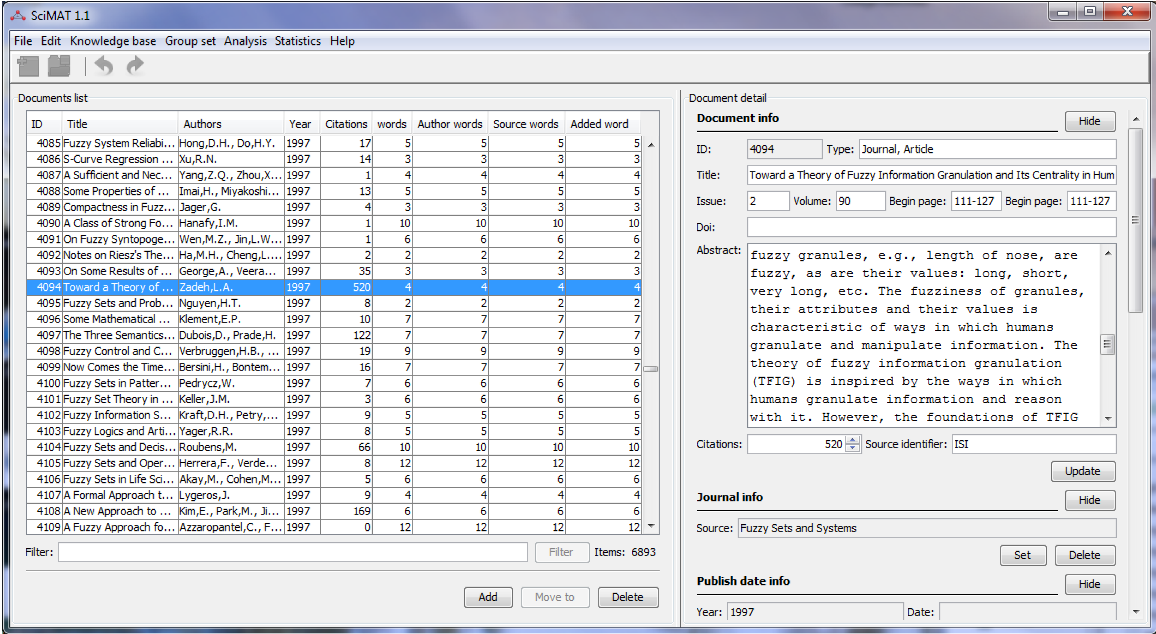
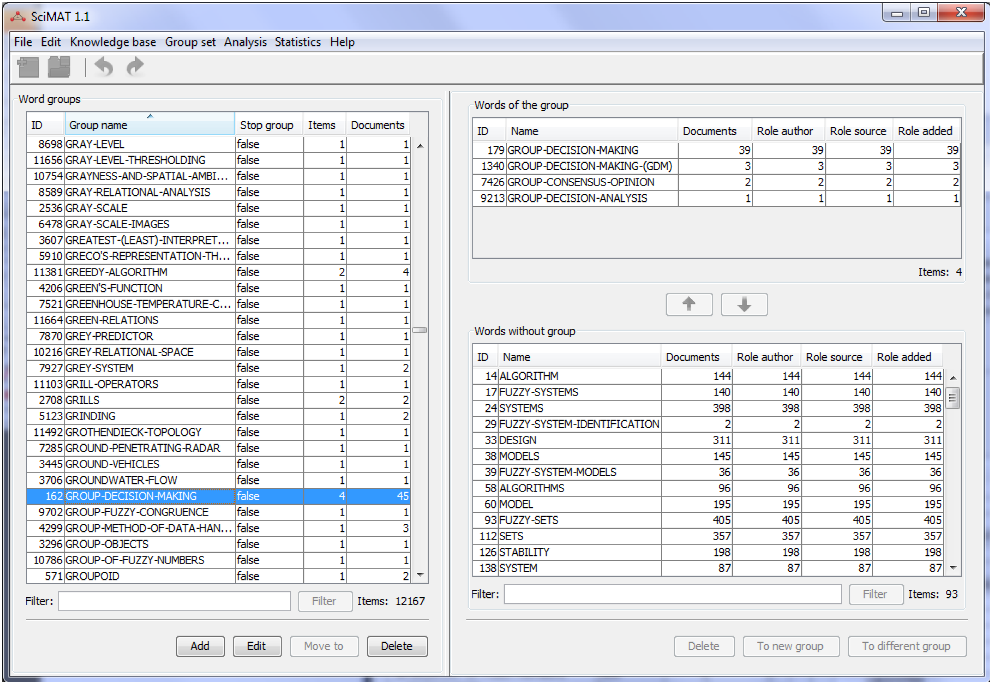
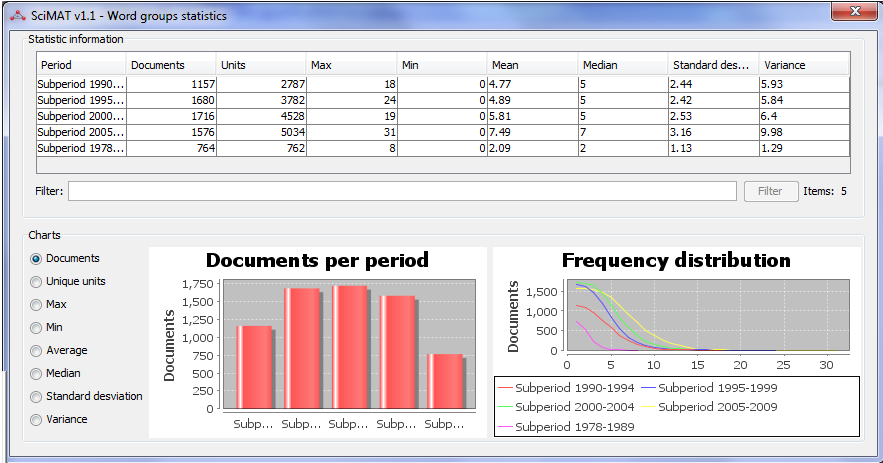
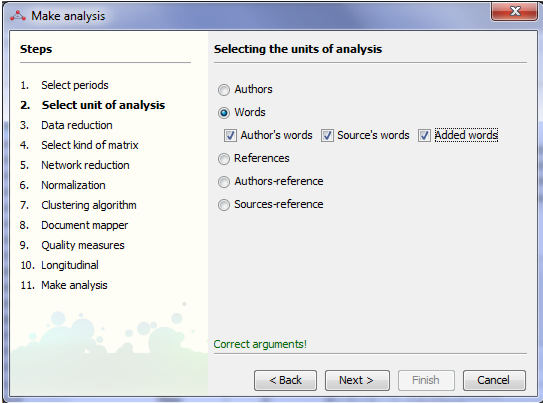
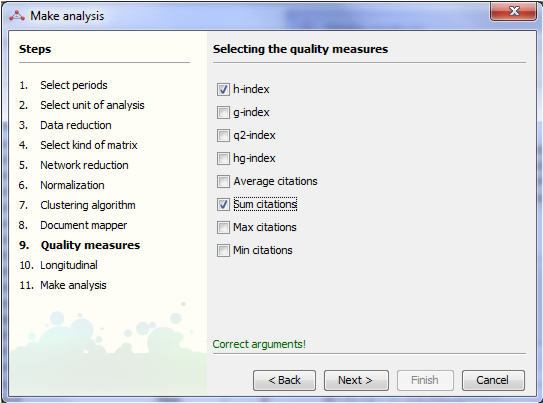
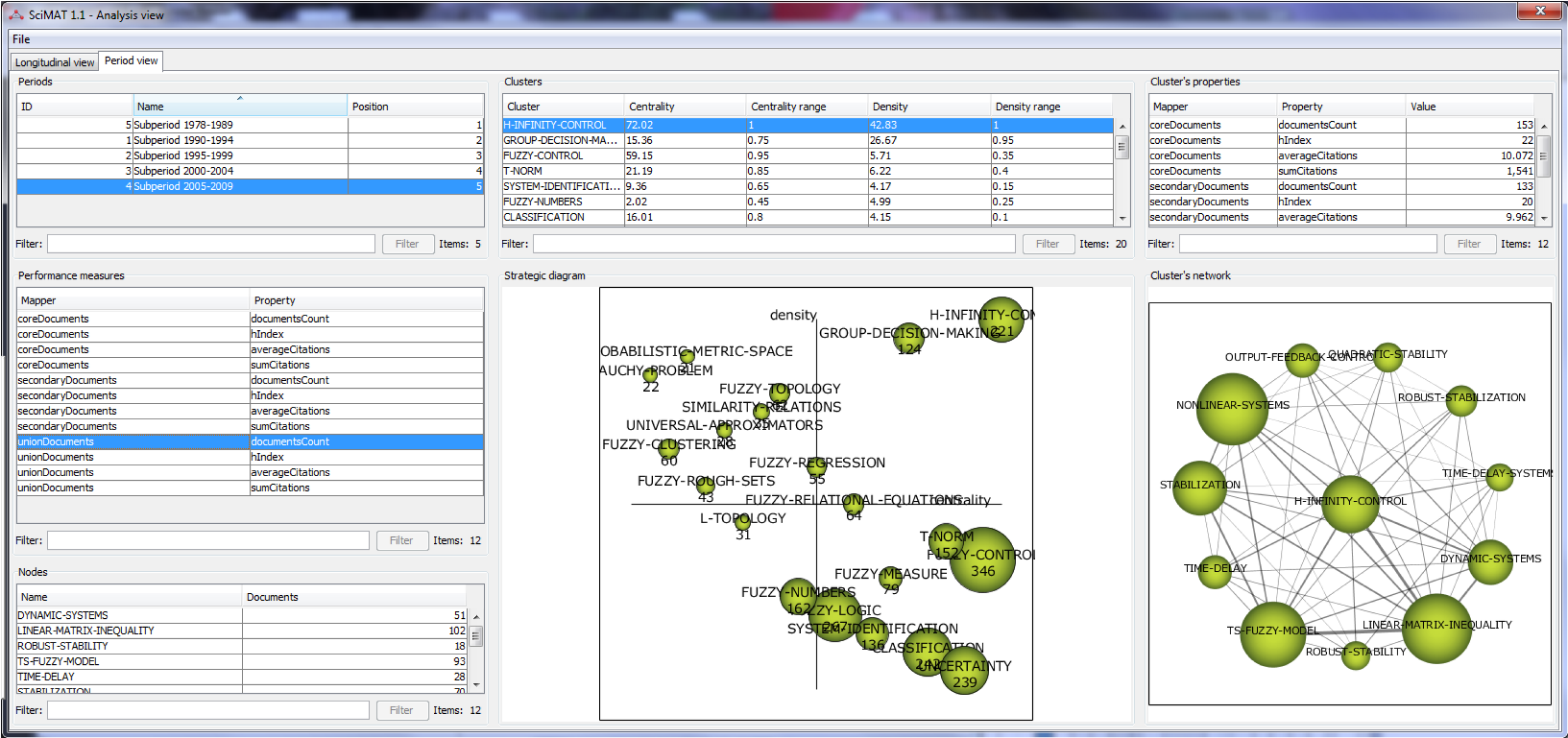
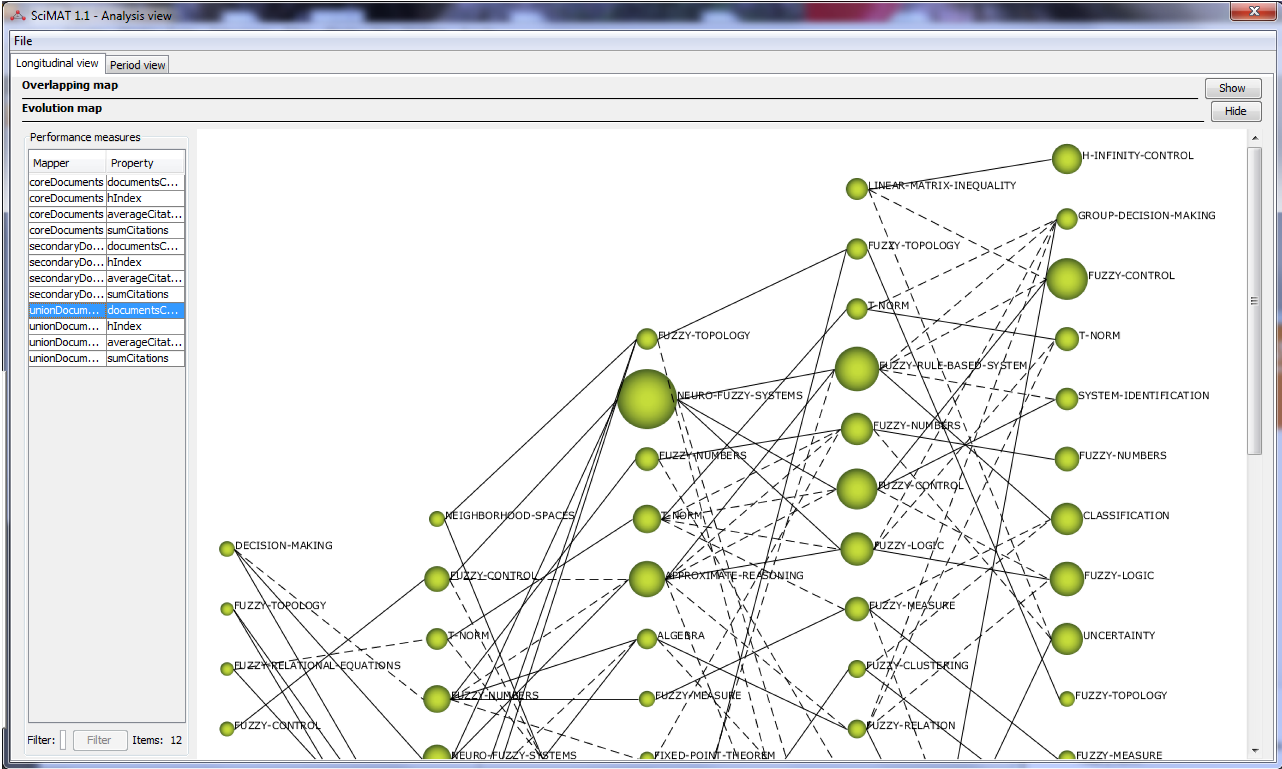
SciMAT born on the research group Sci2s at University of Granada, Spain. SciMAT has been developed by:
If you have any questions about SciMAT or any suggestions for improvements, do not hesitate to contact us. We also welcome your feedback on SciMAT. If you have found a bug, please let us know.



